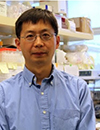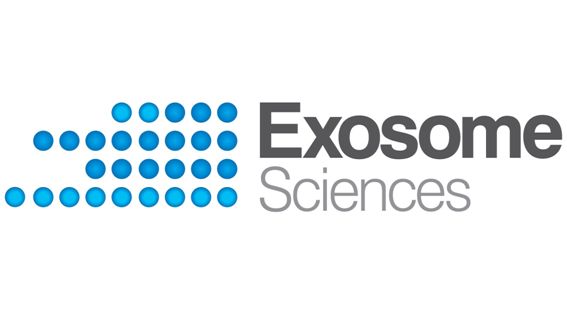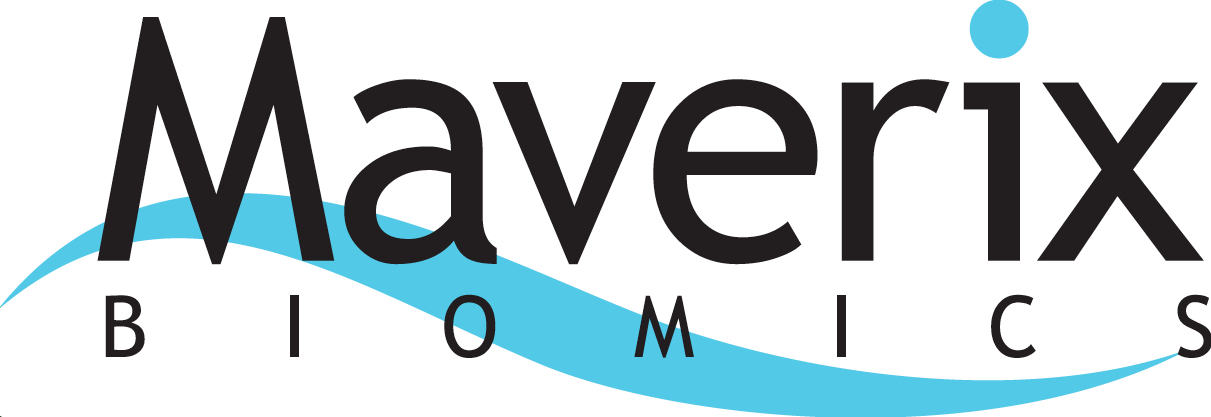
Thursday, 18 September 201408:00 | Conference Registration and Continental Breakfast in the Exhibit Hall | |
Session Title: Emerging Trends and Approaches in Single Cell Analysis (SCA). |
| | |
Session Chairs: Steve Soper, Ph.D. and Kun Zhang, Ph.D. |
| | 09:00 |  | Keynote Presentation Single-cell Sequencing of the Human Brain
Kun Zhang, Professor, Department of Bioengineering, University of California San Diego, United States of America
Individual cells in a population are often somewhat different from one to another. Measurements made on bulk cell populations do not capture the inherent heterogeneity of the cell population, and important insights can be missed. In this talk I will discuss some technical challenges in analyzing individual cells in adult human brain, and present a number of recent progresses we made in acquiring genome and transcriptome information from single cortical neurons from post-mortem brain specimens. |
| 09:45 | Cytobank: Enabling Single Cell Analysis & Personalized Medicine
Nikesh Kotecha, CEO & Co-Founder, Cytobank Inc., United States of America
The promise of next generation therapies, drugs and diagnostics rely on the ability to selectively target pathways and cell subsets – increased selectivity can mean the difference between a broad therapy with significant side effects and a focused therapy that selectively targets diseased cells. Single cell technologies such as flow and mass cytometry are positioned to fulfill this promise but have been hampered by the analytics. Platforms such as Cytobank are overcoming this challenge and helping users understand biological systems controlling development and cell-cell interactions and thus enabling precise targeting of abnormal signaling to specifically kill diseased cells. | 10:15 | Integrated Microfluidic System for Single Cell Analysis of Circulating Tumor Cell Sub-populations with Divergent Phenotypes
Steve Soper, Foundation Distinguished Professor, Director, Center of BioModular Multi-Scale System for Precision Medicine, The University of Kansas, United States of America
While metastatic disease causes ~90% of all cancer related deaths,
determining the role of various cancer cells, either from the primary
tumor or those in circulation (circulating tumor cells, CTCs), in the
metastatic process has been difficult due to the continuum of phenotypes
they possess and/or the rare nature of these cells, especially CTCs. To
assist in studies based on the use of rare CTCs that may be involved in
metastasis, an integrated microfluidic system was designed, fabricated
and evaluated, which could select multiple types of cells, including
cells that have an epithelial phenotype and those that possess the
ability to digest the extracellular matrix (ECM). | 10:45 | Coffee Break, Networking in the Exhibit Hall, and Meet the Exhibitors | 11:15 |  | Keynote Presentation NanoVelcro-Based Single-Cell Genomics Verifies Surrogacy of Circulating Tumor Cells for Solid Tumor
Hsian-Rong Tseng, Professor, Crump Institute for Molecular Imaging, California NanoSystems Institute, University of California-Los Angeles, United States of America
Our team at UCLA has demonstrated a highly efficient, inexpensive CTC assay (known as NanoVelcro Chips) capable of detecting and isolating circulating tumor cells (CTCs) in blood samples collected from metastatic cancer patients. In addition to conducting CTC enumeration, we have been exploring the use of NanoVelcro Chips to isolate single CTCs without contamination by white blood cells (WBCs). The individually isolated CTCs can then be subjected to molecular analysis by RT-PCR and next-generation sequencing, providing insights into tumor biology and heterogeneity and identify driver mutations that responsible to malignant transformation of cancer. Moreover, the molecular profiling of CTCs may identify novel biomarkers that could guide the choice of therapies for individual patients as well as facilitate the development of new drugs. |
| 12:00 | Live Cell Imaging-based Platforms for Single Cell/Element Time Lapse Measurements
Naomi Zurgil, Head, Bar Ilan University, Israel
Individual living cells within a population may differ significantly and these differences can drive the health and function of the entire cell population. Live cell analysis of individual cells is a challenging endeavor due to the complexity of cell systems and cell motility. In the current study, we present novel methodologies and means for analyzing dynamic states of individual cells/group of cells, which enable monitoring alterations in cell behavior and function over time, in a complex tissue environment, and assessing functional changes at single cell level. This provides information on the physiology and the pathology status of a given cell, to be used in diagnosis and treatment of a spectrum of human diseases. The essential features of the above platforms are based on the concept of various types of arrays made of high-quality transparent micro-chambers, where each micro-chamber functions as a picoliter-well designed to hold a single cell or cell-aggregate without tethering. The technology is extremely flexible, using a spectrum of biomaterials having different characteristics, and the ability to control dimension, shape and distribution of the microstructures, as well as their configurations. This flexibility enables adaptation of the arrays to various cell types and use of both label-free and fluorescence detection methods to determine live cell status in real-time. The following practical applications of these unique cell-based platforms will be presented: [1]. Drug screening in 3D multicellular spheroids co-cultured with accessory cells; [2]. Cryopreservation of individual cells; [3]. Live cell measurement followed by cell content analysis of the same cells; and [4]. Single cell analysis of cell transfection and protein translocation. | 12:30 | Networking Lunch in the Exhibit Hall, Meet the Exhibitors, and View Posters | 13:30 |  Technology Spotlight: Technology Spotlight:
Every Cell has a Story – Igniting a Revolution Through Single-cell Systems Biology
Jason McKinney, Director, Field Applications, Fluidigm Corporation
Relying on average measurements will often be misleading when the cells being studied are heterogeneous. By applying single-cell genomic and proteomic techniques, biology such as stem cell differentiation and cancer development can now be directly assessed at the fundamental unit of life. This seminar will take a deeper look into new approaches required to study genomics and proteomics at the single cell level, and microfluidic technologies for cell capture and genomic analysis that are being developed to do so.
| |
Session Title: Novel Tools and Technologies for Single Cell Analysis (SCA)-Microfluidics Meets SCA. |
| | |
Session Chairs: Naomi Zurgil, Ph.D. and Lidong Qin, Ph.D. |
| | 14:00 | Integrated Microfluidics Device for Single Cell Analysis
Lidong Qin, Professor and CPRIT Scholar, Houston Methodist Research Institute, United States of America
| 14:30 | Hallmarks and Regulatory Coordination Points in Human Development Revealed by Single Cell Trajectory Detection
Sean Bendall, Assistant Professor, Stanford University School of Medicine, United States of America
Tissue regeneration is an orchestrated progression of cells from an immature state to a mature one, conventionally represented as distinctive cell subsets landmarked along development. Yet, a continuum of transitional cell states is exists between these discretized stages. We combine the deep phenotyping of single-cell mass cytometry to leverage this continuum by aligning cells of a given lineage onto a unified trajectory that accurately predicts the developmental path de novo. Applied to primary human B-cell lymphopoiesis, the algorithm (termed Wanderlust) constructed trajectories spanning from hematopoietic stem cells through to naïve B cells. Analysis of this trajectory revealed nascent fractions of B-cell progenitors and aligned them with developmentally cued regulatory signaling (IL-7/STAT5) and cellular events (immunoglobulin rearrangement), highlighting developmental checkpoints across which regulatory signals are rewired paralleling changes in cellular state. This study provides the most comprehensive phenotypic analysis of human B lymphopoiesis to date, laying a foundation to apply such methods to other tissue types and “corrupted” developmental processes such as cancer. | 15:00 | Coffee Break and Networking with Exhibitors in the Exhibit Hall | 15:30 | Microencapsulated Sensors for Circulating Tumor Cell Detection
Weian Zhao, Associate Professor, Department of Biomedical Engineering, University of California-Irvine, United States of America
We will present a new platform technology that detects rare CTCs in blood with extremely high sensitivity, specificity, and throughput. The technology relies on micro-encapsulated sensing systems that detect intracellular genetic markers, cell surface proteins or secreted markers. | 16:00 |  | Keynote Presentation Single-Cell Biology: Changing our Understanding of Fundamental Molecular Mechanisms in Life Sciences
Gajus Worthington, CEO, Fluidigm Corporation, United States of America
Single-cell biology, particularly single cell genomics and proteomics, is changing our understanding of fundamental molecular mechanisms in many areas of life science research. Yet this exciting field is nascent and much remains to be done. Join Fluidigm co-founder, president and chief executive officer Gajus Worthington as he surveys some of the latest trends and developments in single-cell biology research, including how select researchers are tackling ambitious 100,000 cell projects using Fluidigm’s existing single-cell genomics tools, and how high-dimensional single-cell proteomic data is being used to reveal cellular diversity in fields such as immunology and cancer research. The ramifications of single cell science are broad, and may usher in a new phase of discovery and understanding. This pursuit will require the development of entirely new experimental workflows, and Gajus will lay out Fluidigm’s vision for future tools that can enable successive waves of discovery. |
| 16:45 |  Technology Spotlight: Technology Spotlight:
Exosomes: A Multiplexed Platform for Clinical Management
Doug Taylor, Chief Scientific Officer, Exosome Sciences Inc
| 17:15 | Molecular Diagnostics of Biofluid-derived Extracellular Vesicles for Brain Tumors
Leonora Balaj, Instructor in Neurosurgery, Mass General Hospital (MGH)/Harvard Medical School, United States of America
Fluid biopsies are powerful because they allow for molecular characterization of tumors in a minimally invasive fashion. All tumors secrete extracellular vesicles (EVs) that are relatively stable in biofluids and can provide important information about the disease state. Tumor derived EVs are a minor component in a pool of normal cell derived EVs, so detecting tumor markers is a major challenge. Assay sensitivity and specificity are particularly imperative when they are used as companion diagnostic or for trial stratification. Brain tumors hold an extra level of challenge because of their enclosed location in the brain. We sought to determine the presence and levels of the mutant isocitrate dehydrogenase 1 (IDH1) in the plasma and cerebrospinal fluid (CSF) of patients with glioma. We determined a robust sensitivity of 1 mutant copy in 10,000 wild type copies when using spiked in RNA from mutant and wild type cells. We also detected the mutant IDH1 in 63% of CSF samples. We also characterized plasma and serum derived EVs for the presence of mRNA and miRNA species using the miScript miRNA PCR Arrays (Qiagen) for serum and plasma, and the RT2 ProfilerTM PCR array Human Cancer Pathway FinderTM (Qiagen) for mRNA and we report differential EV signatures in glioblastoma patients compared to controls. We are currently analyzing plasma samples from IDH1 mutant glioma patients. This finding expands the diagnostic potential of circulating tumor EVs and demonstrates the great promise for this technology in next-generation companion diagnostics and mutational profiling of individual tumors. | 17:45 | Exosomes and Microvesicles: A Technology and Market Review
Gary Oosta, Founder, Emerging Technology Insights, United States of America
Exosomes, the “trash bag” of a cell, may also be a diagnostic or therapeutic gold mine. In this presentation we will explore research activity in exosomes or microvesicles using technology analytic methods to better understand technology developments in selected market segments. The process spotlights technology drivers and drags in exosome research. The technology analysis process begins by carefully forming a database of papers/abstracts from PubMed covering exosomes. Trends (from segments) in the database were discovered using well-chosen keywords, text clustering, adjacent word (adjective) discovery routines as well as web research and marketing research reports. The process is an objective method to survey the entire exosome field. Our analysis shows that the exosome space has shown dramatic growth for the last few years, and shows no signs of stopping. Exosome nomenclature is a nightmare that is just beginning to resolve itself. Our analysis of over 470 segments shows that the apoptosis and cancer are large - even dominant – segments, but that many other areas are well represented as well. High growth segments (drivers) and slow growth segments (drags) will be discussed. Some segments are connected to others as parts of a disease, a technology or as a tool used in an area. We highlight the connections among segments with a Hot Spot Map. Mapping results show some expected connections and some surprises. The analysis and mapping suggest that the exosome space is ripe for further growth. It is clear that commercial entities are interested, but that most research is still academic. Our analysis also hints that the area could benefit by collaborating with more “established” new areas such as cancer biomarkers. | 18:15 | Cocktail Reception in the Exhibit Hall: Visit the Exhibitors and Network with your Peers | |
AllSeq Symposium Starts at 19:30 |
| | |
Next-Generation Sequencing (NGS) in Research and in the Clinic |
| | 19:30 |  Technology Spotlight: Technology Spotlight:
A Practical Guide to the $1,000 Genome
Shawn Baker, Chief Science Officer/Chief Executive Officer, AllSeq Inc, United States of America
Michael Heltzen, CEO and Co-Founder, AllSeq, Inc., United States of America
The next generation sequencing market has been experiencing rapid advancements over the past several years. While this makes for an exciting time in the field of genomics, it can be difficult for researchers to keep up with the latest developments. Through the projects placed on AllSeq’s Sequencing Marketplace, we have a unique and unbiased look at the market, with insights into the popularity and true cost of the various platforms and applications. Special attention will be given to the $1000 genome, including the following:
- True cost of the ‘$1000 Genome’
- Whole genome sequencing vs. exome sequencing
- Data analysis options
- Implications for clinical sequencing
| 21:00 | Close of Day 1 of the Conference. |
Friday, 19 September 201408:00 | Continental Breakfast in the Exhibit Hall and Networking | |
Session Title: The Study of Exosomes and Other Classes of Extracellular Vesicles (EVs). |
| | |
Session Chairs: Dominique de Kleijn, Ph.D. and Johan Skog, Ph.D. |
| | 08:30 |  | Keynote Presentation Nanoparticle Flow Cytometry of Individual Extracellular Vesicles
John Nolan, CEO, Cellarcus Biosciences, Inc., United States of America
Extracellular vesicles (EVs) released from cells have attracted much attention as potential biomarkers and therapeutic targets, but their small size presents a challenge for analysis. Because EVs can originate from many cell types and from different membrane compartments within a cell, EVs from blood or other fluids are intrinsically heterogeneous, and require a multiparameter measurement approach to identify sub-populations that might have physiological relevance. Flow cytometry is perhaps the most widely used multiparameter single particle analysis platform, but commercial instruments lack the sensitivity to detect the vast majority of EVs. We have developed a custom Nanoparticle Flow Cytometer (NFC) and associated methods that can rapidly analyze individual membrane vesicles as small as 70 nm in diameter and resolve particles with less than 100 fluorescent antibodies bound to their surface. I will describe the measurement principles of the NFC, calibration and validation experiments, and present results of EV measurements of cell culture supernatants and blood. This ability to make quantitative, multiparameter measurements of individual EVs will be a key to understanding the roles of these nanoparticles in health and disease. |
| 09:15 | Live-Cell Imaging of Extracellular Vesicles with Single Molecule Sensitivity
Emanuele Cocucci, Instructor, Boston Childrens Hospital and Harvard Medical School, United States of America
Extracellular vesicles (EVs) are membrane bound objects released by cells in the outer space, either upon fusion of multivesicular bodies with the plasma membrane (exosomes), or by direct outward budding of the plasma membrane (ectosomes). EVs retain proteins and nucleic acids of the donor cells and fuse within acceptor cells. The released content can influence the target cell behavior. Numerous classes of EVs exist, showing differences in size composition and origins. Therefore, a thoughtful study of the EV traffic is essential to define which specific classes are competent for influencing the target cells. State of the art spinning-disk confocal microscopy, coupled with computational tools, allows nowadays to detect few fluorescent molecules and to follow their trafficking in monitored cells in real-time. The application of these approach on EVs traffic will elucidate which endocytic routes are followed by the EVs, which EV subclasses are competent for fusing with endomembrane and in which subcellular compartment. The acquired knowledge will shed light on EV competence for transferring information among cells and the key EV properties which can be exploited to develop next generation drug delivery nanoparticles. | 09:45 | Circulating microRNAs in Cancer: Tissue Origin and Correlation with Tumor Expression
Adam Pavlicek, Associate Director, Bioinformatics, Regulus Therapeutics, Inc., United States of America
Circulating microRNAs are promising candidates as minimally-invasive biomarkers for tumor detection, disease monitoring, and patient stratification. Changes in serum microRNAs have been reported for many tumor types. However, how well global changes in tumor microRNA expression are reflected in circulating microRNAs is less understood. Using a mouse genetic model of HCC, we found that that serum microRNA pro¬files reflect both changes in the tumor tissues and systemic response to tumor burden. The serum-specific alteration included microRNAs linked to immune response, liver injury and other systemic responses to the tumor burden. Interestingly, most of the changes in both liver and serum are reversed upon inhibition of the driving oncogene. This pre-clinical proof-of-concept demonstrates that circulating microRNAs are suitable candidates for tumor detection as well as monitoring disease progression and treatment response. | 10:15 | Coffee Break and Networking with Exhibitors in the Exhibit Hall | 10:45 |  | Keynote Presentation How to Leverage the Power of Exosomes in Diagnostics
Johan Skog, Chief Scientific Officer, Exosome Diagnostics Inc, United States of America
Biofluid molecular diagnostics have generated a lot of interest the recent years, especially with new emerging platforms that enable low abundant tumor transcripts and mutations to be detected even from biobanked plasma and urine. Using biofluids as a surrogate for tissue to monitor the progression of disease processes is highly desirable for diseases like cancer where the genetic status of biopsies taken prior to treatment may not be relevant later in disease. The exosome platform allows for recovery of high quality nucleic acid for analysis of tumor derived mutations, splice-variants, and enables RNA profiling to stratify patients and monitor treatment efficacy on longitudinal samples. The latest data from Exosome Diagnostics improvements in detection methods of rare variants as well as improving the yield of tumor derived mutations from plasma will be presented. |
| 11:30 | Role of Exosomes and Microvesicles in Multiple Myeloma
Flavia Pichiorri, Assistant Professor, The Ohio State University, United States of America
Multiple myeloma (MM) is a hematological malignancy of plasma cells in the bone marrow (BM). The microenvironment of the BM plays a key role in MM cell persistence and survival through release of soluble factors and expression of adhesion molecules. The role of extracellular vesicles, exosomes and microvesicles, in this model of MM, has not been readily explored. We were the first one to characterize the protein content and relative abundance of vesicles derived from distinct MM cell lines. We established differences in protein abundances between MM patient’s serum and bone marrow derived vesicles when compared to healthy donor extracellular vesicles. During my talk I will show that serum CD44 is primarily localized to the peripheral vesicles of MM patients and that extracellular vesicles associated CD44(EV-CD44) positively correlates with serum ß2 microglobulin levels, serum creatinine and ISS stage suggesting EV-CD44 can function as a biomarker of MM. These results generate a foundation for hypothesis driven studies of MM biology and the potential use of serum CD44 as a novel serum biomarker of MM. | 12:00 | RNA Signatures Associated with Brain Injury and Disease
Kendall Van Keuren-Jensen, Professor and Deputy Director, Translational Genomics Research Institute, United States of America
One of our goals has been to examine the extracellular RNA contents in cell-free biofluids to identify markers of brain injury and disease. We have examined multiple biofluid types from patients with head trauma and neurodegenerative disease. We discuss the utility of each biofluid in reliably reflecting injury and we will discuss common and specific RNAs that are altered by injury and disease. | 12:30 | Networking Lunch in the Exhibit Hall, Meet the Exhibitors, and View Posters | |
Session Title: Exosomes, Microvesicles, CTCs -- Convergent Technologies and Biomarker Potential. |
| | |
Session Chairs: Leonora Balaj, Ph.D. and Sasha Vlassov, Ph.D. |
| | 13:30 |  Technology Spotlight: Technology Spotlight:
Immuno-Affinity Magnetic Beads Based Exosome Isolation Method
Kenneth Henry, Senior Research Scientist, JSR Micro, Inc.
In order to isolate exosomes from various body fluids and cell culture supernatants, we have successfully developed ExoCapTM Isolation Kits, which utilizes a magnetic beads based isolation method. ExoCap consists of magnetic particles coupled with antibodies that recognize antigens on the exosome surface, a diluent/ washing solution, and a reagent that releases the captured intact exosomes for analysis. The antibodies against CD9, CD63, CD81, and EpCAM were specifically selected for this kit. ExoCap can easily and rapidly separate exosomes within 30 minutes, without an ultracentrifuge or any special equipment. In exosome rich samples, as little as 100 µL is a sufficient sample volume for the isolation of exosomes that are compatible with various downstream analysis such as western blots RT-qPCR or electron microscopy. ExoCap allows the enrichment of a pure population of specific exosomes based upon target antigen.
| 13:50 |  Technology Spotlight: Technology Spotlight:
Tools for Exosome and Single Cell Analysis Research
Bernard Lam, Senior Research Scientist, Norgen Biotek Corporation
| 14:10 |  Technology Spotlight: Technology Spotlight:
Extracorporeal Clearance of Tumor-Secreted Exosomes, An Adjunct Strategy to Improve Cancer Treatment Outcomes
James Joyce, Chairman & CEO, Aethlon Medical, Inc.
| 14:30 |  | Keynote Presentation Plasma Extracellular Vesicle Content as Biomarker Source for Cardiovascular Disease
Dominique PV de Kleijn, Professor Experimental Vascular Surgery, Professor Netherlands Heart Institute, University Medical Center Utrecht, The Netherlands, Netherlands
Cardiovascular Disease (CVD) is with the cardiovascular events of Ischemic Heart Disease and Stroke, the number 1 and 2 cause of death in the world and expect to increase especially in Asia. Atherosclerosis is the underlying syndrome for CVD and atherosclerotic plaques are detectable already in teenagers. Therefore for cardiovascular disease, we have to determine who is at high risk for a cardiovascular event in a high-risk background of the atherosclerotic syndrome without the possibility of taking a plaque biopsy. The risk for Cardiovascular events is region-dependent so tailored plasma-based biomarkers are essential to guide prevention and treatment of billions.
Collecting plasma extracellular vesicles is like taking a liquid biopsy from the pathological tissue that can be used for diagnosis and prognosis of the disease. Using biobanks of different ethnicities with large numbers of patients, we show that plasma extracellular vesicle content can be used as an accurate source for diagnosis and prognosis of cardiovascular disease. |
| 15:15 | Coffee Break and Networking with Exhibitors in the Exhibit Hall | 15:45 |  Technology Spotlight: Technology Spotlight:
Streamlining Single-Cell RNA Sequencing Analysis for Biologists with the Maverix Analytic Platform
Byung-in Lee, Vice President, Product Operations, Maverix Biomics, Inc.
With the advancement of single-cell sequencing methodologies, the demand for analytic tools to handle complex data has grown rapidly. We will present the Maverix Analytic Platform, a cloud-based environment built for biologists that leverages best-in-class tools and provides an integrated UCSC-genome browser to enable visualization of results in broad context.
| 16:00 |  Technology Spotlight: Technology Spotlight:
Particle Tracking Analysis (PTA): Size and Charge Fingerprints of Exosomes
David Palmlund, Technical Sales Engineer, Microtrac
In the field of nanoparticle characterization, zeta potential has long been known as measure for stability and particle-particle interactions and is a physical-chemical parameter. However, the characterization of low concentrated nanoparticle suspensions, such as exosomes, is challenging.
Particle Tracking Analysis (PTA) is a technique where single particles of the sample are visualized and traced. By analysis of the particle traces, the PTA device (ZetaView®, Particle Metrix, Germany) performs the measurement of particle size, concentration and zeta potential of exosomes in one experiment. As the zeta potential is affected by pH and ionic strength, even more information about the sample can be gained by variation of buffer composition, resulting in discrete charge fingerprints. We utilize the advantages of PTA with emphasis on practical aspects relevant for exosome characterization. Potential applications, such as monitoring of pH sensitive exosome-exosome interactions in combination with multiparameter characterization will be discussed on selected examples.
| 16:15 | ExRNAs as Biomarkers for Placental Dysfunction
Louise Laurent, Associate Professor, University of California-San Diego, United States of America
Placental dysfunction, most commonly manifested as preeclampsia or intrauterine growth restriction, is an important cause of maternal and fetal morbidity and mortality in both the developing and developed world. It is thought that placental dysfunction arises from abnormal trophoblast differentiation and/or invasion, events that occur in the first trimester of pregnancy, but become clinically apparent only in the late second and third trimesters. Optimal surveillance and management of placental dysfunction, as well as the development of effective therapies, have been hampered by the lack of methods for early and accurate identification of pregnancies at risk for this disorder. We will discuss pregnancy-specific ExRNA profiles and the potential for ExRNAs as biomarkers for placental dysfunction and other adverse pregnancy outcomes. | 16:45 | Extracellular Vesicles in Cancer Signaling Pathways
Michael Graner, Professor, Dept of Neurosurgery, University of Colorado Anschutz School of Medicine, United States of America
Extracellular vesicles (EVs) are virus-sized membrane-enclosed vesicles that are released by cells via various mechanisms. Their contents reflect the molecular make-up of their cells of origin, and thus EVs show potential as biomarkers. EVs also serve as packets of signal initiators and transducers with effects proximal and distal to their release. Here we show that EVs from brain tumor cells have profound impacts on recipient cells (both tumor cells and normal cells) in terms of proteomic changes and induced signaling cascades. Most of these changes can be regarded as benefiting the tumor. The abilities of EVs to influence phenotypes and activities of recipient cells are likely among the most important functions of EVs. In a tumor setting, this knowledge may help us design better therapeutic strategies based on a continuous dynamic rather than static assumptions about the status of a cancer. | 17:15 | Salivary Exosomes: Clinical Utilities and Biology
David Wong, Felix and Mildred Yip Endowed Chair in Dentistry; Director for UCLA Center for Oral/Head & Neck Oncology Research, University of California-Los Angeles, United States of America
Salivary extracellular RNA (exRNA) and protein have been demonstrated to possess clinical utilities as biomarkers for early detection of oral and systemic diseases. More recently salivary exRNA were shown to be contained in exosomes, shuttling disease-specific exRNA from the disease organs via blood stream to salivary glands and into saliva as disease-specific salivary biomarkers. | 17:45 | CTCs as Exploratory Biomarkers in Early Clinical Trials
Steven Pirie-Shepherd, Director, Pfizer, United States of America
- How do we define, collect, enumerate and characterize CTCs in early clinical trials?
- What is Pharma looking for in the ‘perfect’ CTC assay platform?
- What are the challenges in developing and deploying these assays in clinical trials?
- What are we hoping to achieve with these assays?
| 18:15 | Biomarker Patents after Prometheus and Myriad
Gregory Scott, Patent Attorney, Klarquist Sparkman, LLP, United States of America
The Supreme Court’s decisions in Prometheus and Myriad shifted the biomarker IP landscape by raising the bar to obtain meaningful patent protection for diagnostic methods involving biomarker detection. After two years of uncertainty, the Patent Office and Courts are beginning to offer guidance on how to apply the Prometheus and Myriad standards. I will review these recent legal developments and describe current approaches we are using to obtain patent claims to diagnostic methods. | 18:45 | Understanding Cell-type Specific Regulation of Exosomal Biogenesis
Suraj Bhat, Professor, University Of California Los Angeles, United States of America
Exosomes are produced from multivesicular bodies (MVB’s) as a part of the endolysosomal pathway for the maintenance of protein homeostasis in a eukaryotic cell. The molecular and cellular basis of how a cell makes the choice between the degradation of the protein and its secretion via an exosome remains unknown? Based on the thesis that exosomes are produced in response to molecular signals received from outside of the cell, we have proposed that the exosomal cargo (including proteins, nucleic acids and lipids) may exert an important role in the biogenesis of the exosomes. Our studies with human retinal pigment epithelium (RPE), a highly polarized epithelium at the physical and biochemical interface of the blood: retinal barrier, have indicated that aB-crystallin, a cell-type specific small heat shock protein, secreted via exosomes from the RPE is important for exosomal biogenesis; the inhibition of the expression of aB-crystallin (aB), inhibits exosome secretion. We find that the inhibition of exosome secretion is concomitant with the appearance of enhanced endolysomal compartment in these cells. We will discuss how a cell type –specific protein like aB-crystallin may facilitate /regulate physiological decision making between the endolysosomal compartment and exosome secretion. Understanding the critical steps in exosome biogenesis may allow us to manipulate the molecular content of the exosomal cargo (proteins, nucleic acids). | 19:15 | Pulse Laser Activated Cell Sorter (PLACS) for High Speed Cell Sorting in Microfluidics
Pei-Yu (Eric) Chiou, Associate Professor, University of California-Los Angeles, United States of America
Microfluidic-based fluorescence activated cell sorters (µFACS) have several advantages over conventional electrostatic-droplet-based cell sorters. A closed detection and sorting environment prevents aerosols that can potentially contaminate equipment, personnel, and subsequent sorting experiments. Although various on-chip µFACS mechanisms have been demonstrated, sorting live mammalian cells at high speeds with high sort purity and cell viability remains a challenge. Slow cell switching mechanisms and large fluid perturbation volumes are the two major factors limiting the throughput and purity of current microfluidic FACS devices. This talk presents a microfluidic based, high-speed and high-purity pulsed laser activated cell sorter termed PLACS which utilizes small volume liquid jets induced by pulse laser triggered cavitation bubbles for sample switching. A sorting throughput up to 23000 cells/sec with 90% sorting purity and 90% cell viability has been accomplished in a single microfluidic channel in a single stage. | 19:45 | Close of Conference |
|

 Add to Calendar ▼2014-09-18 00:00:002014-09-19 00:00:00Europe/LondonExosomes and Single Cell Analysis SummitExosomes and Single Cell Analysis Summit in San Diego, California, USASan Diego, California, USASELECTBIOenquiries@selectbiosciences.com
Add to Calendar ▼2014-09-18 00:00:002014-09-19 00:00:00Europe/LondonExosomes and Single Cell Analysis SummitExosomes and Single Cell Analysis Summit in San Diego, California, USASan Diego, California, USASELECTBIOenquiries@selectbiosciences.com